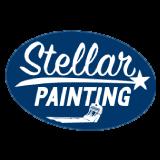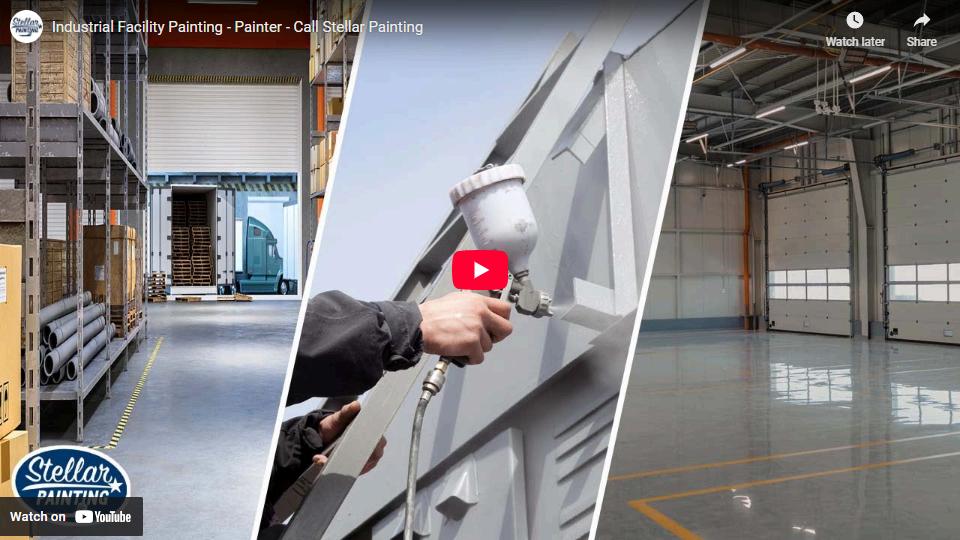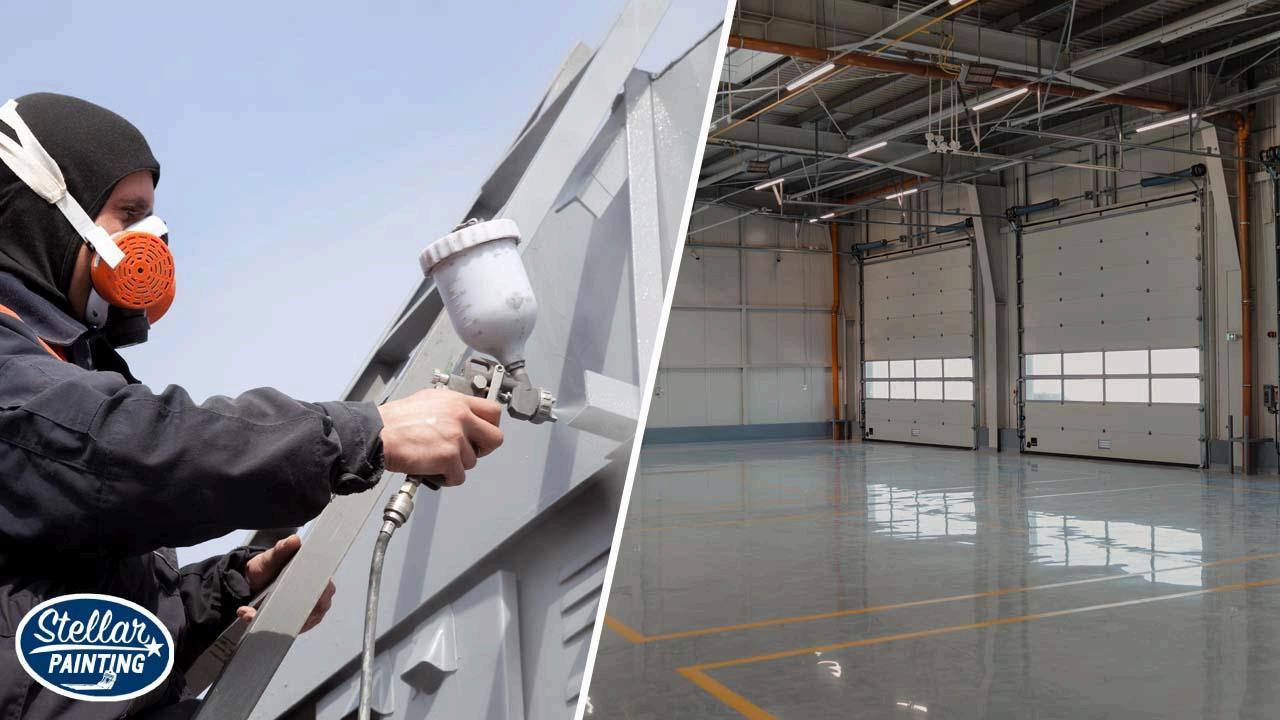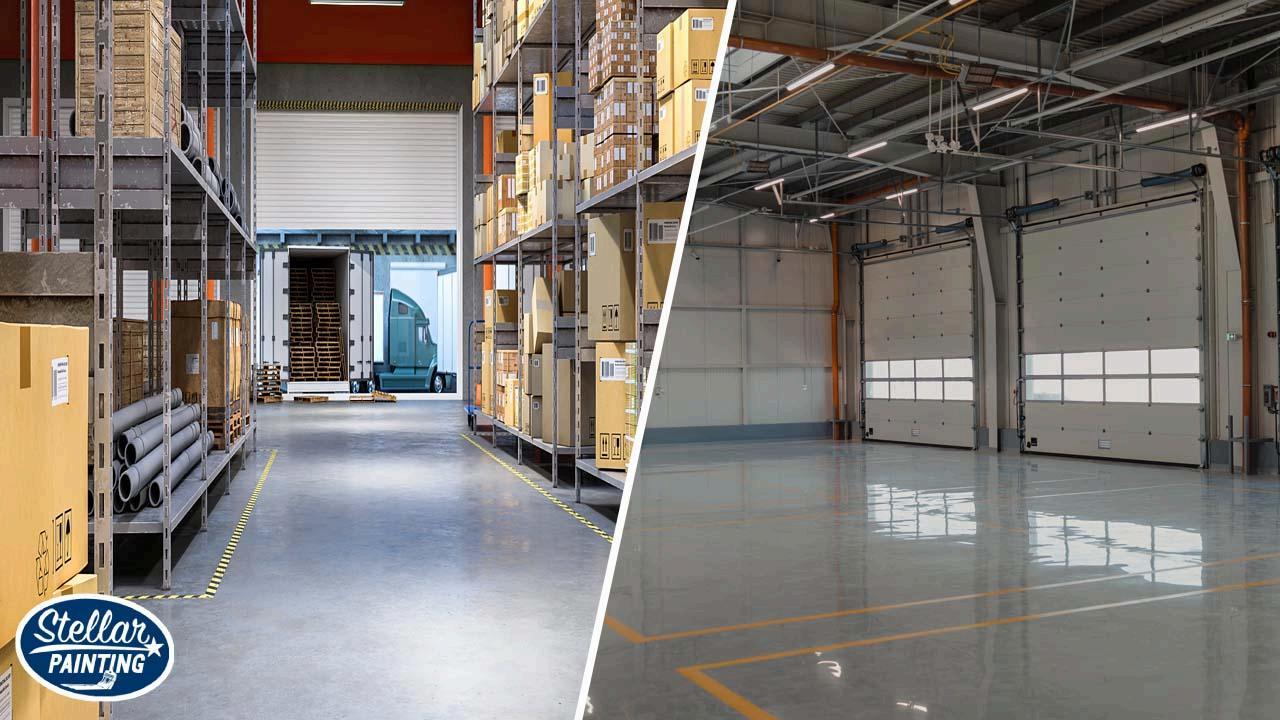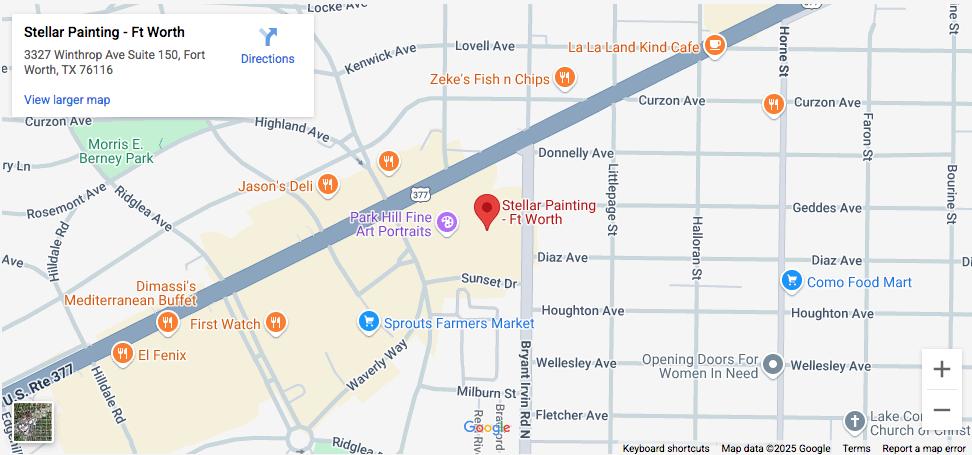Key Performance Characteristics of Industrial Coatings
Industrial coatings must deliver exceptional performance under punishing conditions. Understanding the core properties of these high-performance coatings helps facility managers choose the right system for their operational needs. Below, we explore four
Stellar Painting
https://maps app goo gl/jq9xz4TarLVjHjxx9
critical characteristics—chemical resistance, abrasion & impact resistance, temperature & corrosion resistance, and VOC content & environmental compliance—that define the effectiveness of industrial paint properties.
Chemical Resistance
Industrial environments often involve exposure to acids, alkalis, solvents, and other corrosive substances. Coatings with superior chemical resistance form an impenetrable barrier that prevents substrate degradation and maintains structural integrity over time. Epoxy and phenolic systems are frequently specified where aggressive chemical exposure occurs.
Abrasion & Impact Resistance
Heavy machinery, foot traffic, and moving equipment can abrade or dent poorly protected surfaces. High-performance coatings incorporate tough polymers and additives that absorb and disperse mechanical forces, reducing wear and extending maintenance intervals. Polyurethane topcoats are prized for their outstanding abrasion and impact resistance.
Temperature & Corrosion Resistance
Fluctuating or extreme temperatures can cause coatings to crack, delaminate, or lose adhesion. Specialized formulations maintain flexibility and adhesion from subzero environments to temperatures exceeding 300°F. Corrosion-resistant primers and zinc-rich systems further protect steel structures from rust in humid or marine atmospheres.
VOC Content & Environmental Compliance
Modern industrial coatings balance performance with environmental responsibility. Low-VOC and zero-VOC formulations reduce harmful emissions, helping facilities comply with EPA and local air-quality regulations without sacrificing durability. Waterborne epoxies and polyurethanes deliver robust protection while minimizing environmental impact.
Stellar Painting https://maps app goo gl/jq9xz4TarLVjHjxx9
Comparison of Key Industrial Coating Properties
Property
Typical Coating Types
Performance Benefit Compliance Standard
Chemical Resistance Epoxy, Phenolic Protects against acids, solvents, alkalis NACE TM-01-77
Abrasion & Impact Resistance
Polyurethane, Novolac
Temperature & Corrosion Resistance
Intumescent, Zinc-rich Primer
VOC Content & Environmental Compliance Waterborne Epoxy, Low-VOC PU
Minimizes wear, extends service intervals
ASTM D4060 (Taber Abrasion)
Maintains adhesion; prevents rust SSPC PA 2; ISO 12944-5
Reduces emissions; meets air-quality codes
EPA Method 24; SCAQMD Rule 1113
This comparison table enables facility managers to quickly assess which high-performance coatings best meet their industrial paint property and compliance requirements.
Stellar Painting
https://maps app goo gl/jq9xz4TarLVjHjxx9
Where Industrial Facility Painting Is Applied
Industrial facility painting delivers critical protection and performance across a wide range of heavy-duty environments. By selecting coatings tailored to each setting’s unique demands, facility managers safeguard assets, extend maintenance cycles, and maintain operational efficiency
Manufacturing Plants
In manufacturing plants, equipment and structural steel are exposed to constant mechanical wear, chemical spills, and fluctuating temperatures. Industrial painting applications—such as epoxy primers on steel beams and polyurethane topcoats on floors—provide abrasion resistance and chemical protection that keep production lines running smoothly and reduce unplanned downtime.
Stellar Painting https://maps app goo gl/jq9xz4TarLVjHjxx9
Warehouses & Distribution Centers
Warehouses and distribution centers require coatings that withstand heavy forklift traffic, pallet impact, and dust abrasion. High-performance floor coatings, including polyurea and novolac epoxies, deliver slip resistance, easy cleaning, and long-lasting durability. Proper facility painting uses in racking systems and mezzanines also prevent corrosion and enhance safety.
Food-Processing Facilities
In food-processing environments, hygiene and chemical resistance are paramount. Coatings must resist aggressive cleaning agents, steam, and intermittent moisture while meeting USDA and FDA sanitary standards. Specialized epoxy and urethane floor systems create seamless, non-porous surfaces that inhibit bacterial growth and simplify sanitation protocols.
Power Generation & Utilities
Power plants and utility infrastructure face extreme temperature cycles, UV exposure, and corrosive atmospheres—especially in coastal or industrial areas. Industrial painting applications like zinc-rich primers, intumescent fire-retardant coatings, and high-temperature polysiloxanes protect turbines, piping, and structural supports from rust, heat damage, and fire risk. These facility painting uses ensure continuous energy production and regulatory compliance.
Advanced Coating Solutions for Industrial Environments
Industrial operations often demand more than standard paint systems—they require specialty industrial coatings engineered to solve specific challenges. From heavy-traffic floors to fire-risk structures and electrostatic-sensitive areas, advanced coatings deliver tailored performance that maximizes safety, longevity, and regulatory compliance. Below, we examine four leading solutions: epoxy and polyurethane floor systems, fire-retardant and intumescent coatings, anti-static and conductive coatings, and chemical-resistant linings.
Stellar Painting https://maps app goo gl/jq9xz4TarLVjHjxx9
Epoxy & Polyurethane Floor Systems
Epoxy floor coatings consist of two-component resin systems that cure to form a seamless, high-strength surface. They resist abrasion, impact, and chemical spills, making them ideal for assembly lines and forklift lanes. Polyurethane topcoats add UV stability, gloss retention, and greater flexibility, preventing cracking in areas with thermal cycling. Combined epoxy-urethane systems deliver up to five times the wear life of standard industrial paints, reduce dust generation, and simplify cleaning protocols.
Fire-Retardant and Intumescent Coatings
Structures in power generation, petrochemical, and manufacturing facilities must often meet fire-resistance ratings. Intumescent coatings swell when exposed to high heat, forming an insulating char layer that delays steel temperature rise and maintains structural integrity during a fire event. These specialty industrial coatings are tested to ASTM E119 or UL 263 standards, providing 30- to 120-minute fire protection ratings. Such systems can be applied directly to steel or over primers, reducing the need for bulky fireproof cladding.
Anti-Static & Conductive Coatings
Electrostatic discharge (ESD) poses a serious risk in electronics manufacturing, pharmaceuticals, and grain-handling facilities. Anti-static coatings incorporate conductive fillers—such as carbon or metallic fibers—that dissipate static charges and prevent spark generation. Conductive floor and wall systems comply with ANSI/ESD S20.20 standards, protecting sensitive equipment and reducing the risk of explosion in flammable-dust environments.
Chemical-Resistant Linings
Aggressive acids, alkalis, solvents, and process chemicals can rapidly degrade unprotected substrates. Chemical-resistant linings—often based on novolac epoxies, vinyl esters, or fluoropolymers—form an impermeable barrier that withstands continuous immersion and splash exposure. These linings are specified to resist specific chemical concentrations and temperatures, ensuring long-term protection of tanks, piping, and concrete containment areas.
Stellar Painting https://maps app goo gl/jq9xz4TarLVjHjxx9
Ensuring Safety in Industrial Painting Projects
Safety is paramount when performing industrial facility painting. Robust painting safety procedures protect workers, comply with regulations, and safeguard the environment. Below, we outline key safety protocols—from regulatory compliance to waste handling—that ensure every coating project proceeds without incident.
OSHA & NFPA Compliance
Industrial painting services must adhere to OSHA standards for hazardous materials (29 CFR 1910) and NFPA guidelines for flammable liquids (NFPA 33). These regulations dictate proper storage, handling, and application of coatings to minimize fire and health risks. Regular audits and safety training ensure ongoing compliance.
Personal Protective Equipment (PPE)
Appropriate PPE—such as respirators, chemical-resistant suits, gloves, and eye protection—is essential to shield painters from inhalation hazards and skin contact with solvents, isocyanates, and particulates. Fit testing and PPE maintenance protocols guarantee effective protection throughout the project.
Ventilation & Confined-Space Protocols
Adequate ventilation prevents buildup of volatile organic compounds (VOCs) and solvent fumes. In confined spaces, continuous atmospheric monitoring and supplied-air systems are required per OSHA confined-space entry standards. Lockout/tagout procedures further protect personnel from mechanical hazards.
Environmental & Waste-Disposal Regulations
Spent solvents, paint chips, and rinse water are classified as hazardous waste under RCRA. Industrial coating safety demands proper labeling, storage, and disposal via licensed hazardous-waste handlers. Spill-prevention plans and secondary containment mitigate environmental contamination.
Stellar Painting
https://maps app goo gl/jq9xz4TarLVjHjxx9
Key Safety Measures for Industrial Painting
Safety Area
Regulatory Compliance
Personal Protective Equipment (PPE)
Ventilation & Confined Spaces
Waste & Environmental Controls
OSHA Hazard Communication; NFPA flammables 29 CFR 1910; NFPA 33
Respirators, chemical suits, gloves, goggles OSHA 1910.134; ANSI Z88.2
Air monitoring, supplied-air, LOTO procedures OSHA 1910.146; NFPA 91
Hazardous-waste labeling, spill containment RCRA; EPA 40 CFR 260
Meeting Longevity Standards for Industrial Coatings
Maximizing the service life of industrial coatings requires understanding lifespan expectations, rigorous surface preparation, and resistance to environmental stressors. By following proven best practices, facility managers can ensure durable industrial coatings that minimize maintenance costs and downtime.
Expected Lifespan & Maintenance Cycles
High-performance coatings typically last 5–15 years, depending on service conditions and coating type. Routine inspections—every 6–12 months—identify early signs of wear, such as chalking or blistering, and trigger spot repairs. Scheduled full maintenance cycles align with production shutdowns to optimize operational continuity
Stellar Painting https://maps app goo gl/jq9xz4TarLVjHjxx9
Surface Preparation & Adhesion Best Practices
Proper adhesion begins with thorough surface preparation. Techniques include abrasive blasting to an SSPC-SP 10 (near-white) finish on steel and acid etching or shot blasting on concrete. Cleaning with industrial solvents removes oils and contaminants. A qualified coating inspector should verify surface profile and cleanliness before primer application to prevent premature coating failure.
Impact of Moisture, Chemicals, UV Exposure
Moisture intrusion under coatings leads to blistering and delamination; using vapor-barrier primers on concrete slabs mitigates this risk. Chemical exposure degrades film integrity—select chemical-resistant topcoats for areas with frequent spills. UV radiation accelerates polymer breakdown; UV-stable polyurethanes or polysiloxane coatings protect outdoor structures and maintain color and gloss retention. Continuous monitoring of environmental conditions and choosing coatings rated for specific exposures are essential for long-lasting paint performance.
Our Proven Four-Phase Industrial Painting Method
Delivering a long-lasting, high-performance finish starts with a professional and systematic approach. Our four-phase industrial painting process is designed to meet the toughest facility requirements—from structural steel to production floors—ensuring strong adhesion, maximum durability, and regulatory compliance at every step.
Phase 1: Surface Inspection & Preparation
Every project begins with a detailed inspection to assess surface conditions and identify potential issues such as rust, contamination, or moisture intrusion. Preparation methods vary by substrate and may include abrasive blasting, solvent cleaning, or mechanical grinding. Achieving the correct surface profile is critical to maximizing coating adhesion and performance, making this the most important step in the entire four-step coating process.
Stellar Painting https://maps app goo gl/jq9xz4TarLVjHjxx9
Phase 2: Primer Application
Once surfaces are prepped and verified, the appropriate primer is applied based on substrate type and environmental conditions. Zinc-rich primers protect steel against corrosion, while epoxy primers enhance adhesion to concrete or previously painted surfaces. Accurate film thickness and even coverage are verified during this stage to establish a reliable foundation for all subsequent coating layers.
Phase 3: Base Coat & Specialty Coating
The base coat provides bulk protection and is often customized with specialty industrial coatings—such as epoxy floor systems, anti-static compounds, or fire-retardant materials—tailored to the specific needs of the facility The choice of coating depends on exposure to chemicals, abrasion, temperature swings, and operational demands.
Phase 4: Topcoat & Quality Inspection
The final topcoat adds UV resistance, gloss retention, and an additional barrier to environmental damage. This layer also provides the finished aesthetic for public-facing areas. Once complete, the entire project undergoes a rigorous quality inspection, including dry film thickness (DFT) testing, adhesion verification, and a walkthrough with facility management to ensure all specifications are met.
Frequently Asked Questions About Industrial Facility Painting
Facility managers and operations teams often have important questions when planning an industrial painting project. From regulatory standards to maintenance schedules and operational impact, this industrial painting FAQ addresses the most common concerns related to facility painting.
What Standards Govern Industrial Facility Painting?
Industrial facility painting must comply with a range of standards, including SSPC (Society for Protective Coatings), NACE (National Association of Corrosion Engineers), and OSHA regulations. For specific environments, additional compliance may be required with NFPA (National Fire Protection Association) or FDA guidelines—especially
Stellar Painting
https://maps app goo gl/jq9xz4TarLVjHjxx9
in food processing or chemical manufacturing settings. Coating systems are also evaluated by ASTM and UL performance benchmarks.
How Often Should Coatings Be Inspected or Reapplied?
Inspection frequency depends on the facility’s exposure conditions. Generally, coatings should be inspected every 6 to 12 months to check for chalking, peeling, or corrosion. Reapplication timelines vary, but high-quality systems can last between 5 to 15 years. Touch-up and spot repairs may be required sooner in high-traffic or chemically exposed zones.
Can Production Continue During Painting?
Yes, in many cases, painting can be phased around active operations. Low-VOC and fast-curing coating systems minimize disruption and reduce downtime. Projects in sensitive environments, such as cleanrooms or food facilities, may require after-hours scheduling, negative air containment, or temporary isolation zones.
What Warranties and Guarantees Are Typical?
Most reputable industrial painting contractors offer warranties ranging from 1 to 5 years, depending on the type of coating, surface preparation, and exposure conditions. Guarantees often include adhesion performance, coverage consistency, and compliance with the original project specifications. Extended warranties may be available with ongoing maintenance contracts.
Stellar Painting
https://maps app goo gl/jq9xz4TarLVjHjxx9
Get Your Free Industrial Facility Painting Estimate Today
Industrial Facility Painting Fort Worth TX
Ready to protect and beautify your facility? Stellar Painting delivers high-performance industrial painting solutions designed for safety, longevity, and regulatory compliance. Whether you're upgrading a warehouse floor or applying specialty coatings in a manufacturing plant, our team is equipped to handle the job with precision and care.
Call (682) 432-0558 today for a free painting estimate and learn how Stellar Painting’s industrial painting services can enhance your facility's durability and appearance. Let us help you achieve a clean, compliant, and professional finish that stands up to even the harshest environments.
About Stellar Painting
Stellar Painting
3327 Winthrop Ave Suite 150 Fort Worth, TX 76116 (817) 672-0755
https://stellarpaintingdfw.com/ https://maps.app.goo.gl/kzBYEm8Rg82ArALT7
Stellar Painting
https://maps app goo gl/jq9xz4TarLVjHjxx9
https://www.youtube.com/@StellarPainting-FtWorth
https://www.facebook.com/stellarpaintingftworth/
https://www.instagram.com/stellarpaintingftworth
https://x.com/stellarpaintfw
https://stellarpaintingftworth.blogspot.com
https://stellarpaintingftworth.wordpress.com
https://stellarpaintingftworth.tumblr.com
https://gravatar.com/stellarpaintingftworth
https://www.pressadvantage.com/i_organization/stellar-painting-ft-worth
https://www.pinterest.com/stellarpaintingftworth/ https://medium.com/@stellarpaintingftworth
https://www.diigo.com/profile/stellarpaintfw
https://stellarpaintingftworth.weebly.com/
https://stellarpaintingftworth.mystrikingly.com/
https://issuu.com/stellarpaintingftworth
Related Links:
https://youtu be/gT7xlt4942U
https://posts gle/6V1exo
https://flic kr/p/2r1t63w
https://flic kr/p/2r1tVCy
https://flic kr/p/2r1s5DQ
https://flic kr/p/2r1taQC
https://www.pinterest.com/pin/1142999580431757177/
https://pin.it/7pWgL9Wnc
https://wwwpinterest com/pin/1142999580431757178/
https://pin it/1uoNUAHEN
https://wwwpinterest com/pin/1142999580431757179/
https://pin it/2sPwCw8zj
https://wwwpinterest com/pin/1142999580431757383/
https://pin.it/39fLSC7Vr
https://www.instapaper.com/read/1770907993
https://wwwinstapapercom/read/1770906345
https://wwwinstapapercom/read/1770906342
https://wwwinstapapercom/read/1770906310
https://x com/stellarpaintfw/status/1916902093136310578
https://x com/stellarpaintfw/status/1916899489601749364
https://x com/stellarpaintfw/status/1916899488435744897
https://x.com/stellarpaintfw/status/1916899487202607108
https://stellarpaintingftworth blogspot com/2025/04/industrial-facility-painting-painterhtml
Stellar Painting
https://maps app goo gl/jq9xz4TarLVjHjxx9
https://stellarpaintingftworth blogspot com/2025/04/industrial-facility-painting-stellarhtml
https://stellarpaintingftworth wordpress com/2025/04/28/industrial-facility-painting-painter-call-stellar-painting/
https://stellarpaintingftworth wordpress com/2025/04/28/industrial-facility-painting-industrial-coatings-stellar-pai nting/
https://stellarpaintingftworth wordpress com/2025/04/28/industrial-facility-painting-manufacturing-plants-stellar-p ainting/
https://stellarpaintingftworth wordpress com/2025/04/28/industrial-facility-painting-stellar-painting-call-682-432-0 558/
https://docs google com/document/d/15Pe4b451ux-j3XCRTrvrf2SmMnwWa1QjT006fnU1bDk/edit?usp=sharing
